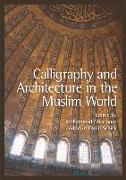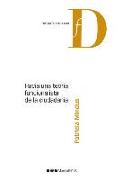- Start
- Calligraphy and Architecture in the Muslim World
Calligraphy and Architecture in the Muslim World
Angebote / Angebote:
The subject of calligraphy on monuments is extremely rich in terms of the varieties of approaches (palaeography, "iconography", meaning, sociology, and aesthetics, among others). This volume allows entry to many of these aspects. It also serves to illustrate the paradox of Islamic art: unity of the Arabic alphabet, and variety of local declinations.'
Yves Porter, Aix Marseille Université, France
The first comprehensive treatment of calligraphy and architecture in the Muslim world
From Spain to China, Islamic architecture and calligraphy are inexorably intertwined. Mosques, dervish lodges, mausolea, libraries, even baths and market places bear masterpieces of calligraphy that rival the most refined of books and scrolls.
This major reference work focuses on architectural inscriptions through the Muslim world, from the emergence of Islam to the present day. What were the purposes of these inscriptions? How do they infuse buildings with culturally specific meanings, sacred or profane? What do they add to architectural design? What sorts of materials were used, and how do they interact with light and space? Who were their patrons, and what do we know about the artists who produced them? These are just some of the questions the authors set out to answer.
Key Features
. 28 case studies explain different aspects and contexts of calligraphy in Islamic architecture
. Geographically wide-ranging: covers Central America, China, India, Iran, Muslim Spain, Turkey and the Arab world
. Takes an interdisciplinary approach to analysing calligraphy as part of its larger spatial-architectural context
. Lavishly illustrated with over 300 colour images
Mohammad Gharipour holds a PhD in architectural history and theory from Georgia Institute of Technology. He currently teaches at Morgan State University in Baltimore. He has received several international awards, including the Hamad Bin Khalifa Fellowship in Islamic Art and the Spiro Kostof Fellowship Award from the Society of Architectural Historians. His books include Persian Gardens and Pavilions: Reflections in Poetry, Arts and History and Bazaar in the Islamic City. He is the founding editor of the International Journal of Islamic Architecture.
Irvin Cemil Schick holds a PhD from the Massachusetts Institute of Technology. He has taught at Harvard University and MIT and is currently at Istanbul Sehir University. His books include The Erotic Margin: Sexuality and Spatiality in Alteritist Discourse, The Fair Circassian: Adventures of an Orientalist Motif, European Female Captives and their Muslim Masters: Narratives of Captivity in 'Turkish' Lands and Writing the Body, Society, and the Universe: on Islam, Gender, and Culture.
Publication of this book has been aided with a contribution by the alBaraka Türk participation bank [+ sponsorship logo]
Cover image: The Dome of Hagia Sophia © A. Cemal Ekin, www.keptlight.com.
Cover design:
[EUP logo]
www.euppublishing.com
Fremdlagertitel. Lieferzeit unbestimmt




